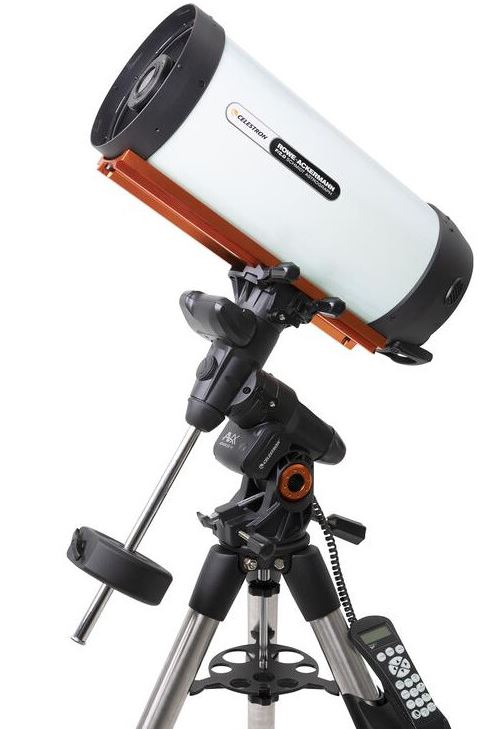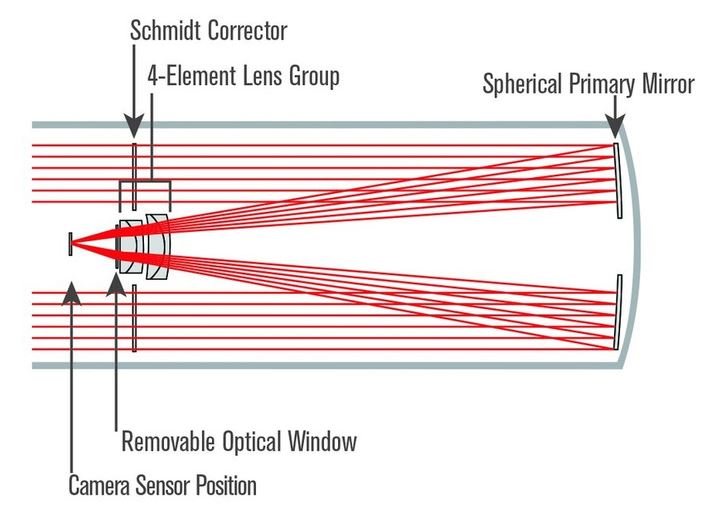The RASA range of telescopes were developed specifically and exclusively for astrophotography. They are very fast; with a focal length of f/2 they take pictures twenty times faster than a Schmidt-Cassegrain lens at f/10! Because of this a tracking control is not required, and generally fewer demands are placed on the mount!
The RASA 1100 model with a 279 millimetre aperture has already been on the market for some time, and Celestron is now also offering a smaller version, the RASA 800, with a 203 millimetre aperture.
This optical system is also within reach of smaller budgets with the RASA 800, particularly since it can be used with a smaller mount. The illustration above shows the RASA 800 with the AVX mount. This astrograph is optimised for astrophotography cameras with a 22 millimetre field diagonal. The larger RASA 1100 is the better choice for those who prefer to use a DLSR for their photography.
The abbreviation RASA stands for the developers’ names: Rowe-Ackermann-Schmidt-Astrograph. It is basically a normal, routinely-produced Celestron Schmidt-Cassegrain instrument; that is with a spherical primary mirror in front of which is a corrector plate invented by Bernhard Schmidt. Instead of using a secondary mirror to direct the light path towards the Cassegrain focus at the end of the telescope, the camera sensor is incorporated in the prime focus. A corrector assembly comprising four lenses made of especially high-quality glass ensures optimal illumination.
As the term astrograph implies, RASA telescopes are designed exclusively for photography. There is no option to use an eyepiece. But if you are an amateur astronomer who specialises in astrophotography, you will not see this as a disadvantage, instead you will quickly learn to appreciate the advantages of the RASA telescopes.


